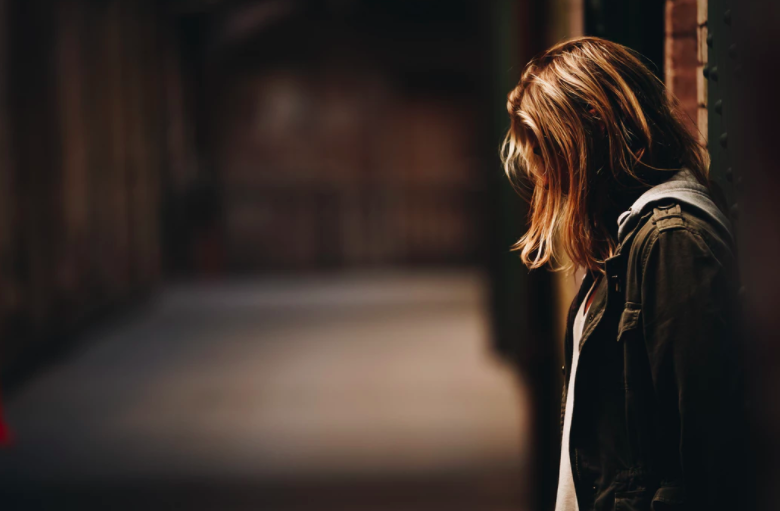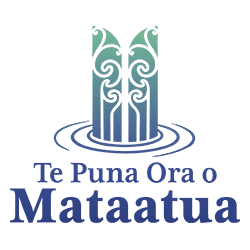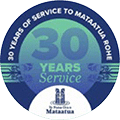Major Recommendations
1. note we support this Bill with amendment;
2. note we welcome the long overdue setting of measures, reporting, targets to address child poverty;
3. note the policy constraints in focusing on the ‘child’ instead of the family; interrelationships and structural dynamics and between the family and local community/clustering and wider society are at risk of being overlooked;
4. note we acknowledge the three new targets set by Rt Hon Jacinda Ardern on 27 March 2018.
5. note the Bill is silent on how targets will be achieved;
6. note the Bill does not make targets legally binding nor prevents them from ongoing (political) amendment;
7. note the Bill does not create any rules, legally enforceable rights, nor will they affect or limit the way a Minister or Chief Executive is required to exercise a statutory power of decision.
8. note the United Kingdom has embraced legally-binding targets;
9. note the Bill does not set specific targets for Māori children in poverty, nor does it attempt to address Māori child poverty issues directly;
10. note the Children’s Commissioner Expert Advisory Group on Solutions to Child Poverty (2012) found that Māori child poverty pose distinctive policy challenges and require distinctive responses;
11. agree the Bill be amended to include specific and pre-emptive Māori child poverty targets;
12. note the Whānau Ora framework can provide a parallel targeted and multiple intervention approach to operate in parallel to abstract measures in the Bill;
13. note Te Puna Ora o Mataatua wishes to be heard in support of this submission at the Select Committee hearing.
Te Puna Ora O Mataatua
14. Te Puna Ora o Mataatua, est. 1991, is a Charitable Trust based in Whakatāne. It provides a broad range of integrated health and well-being services using a kaupapa Māori framework across Mataatua rohe.
15. It has a staff of 30 FTE and over 200 support workers.
16. Services include Whānau Ora, Social Housing, Children’s Team, Mama and Pēpe, Kaumatua, Whānau Health Promotion and Home-Based Support and ACC Services. It manages the Whakatāne Medical Practice (Med Central) based in Kopeopeo.
17. Te Puna Ora o Mataatua also has a Health and Populations Research Institute.
Overview of Bill
18. The Explanatory Note to the Bill states that the Bill reflects the Government’s intent to “help achieve a significant and sustained reduction in child poverty, (through a Child Poverty Reduction Act) and to enhance the overall well-being of children (through amendments to the Vulnerable Children Act 2014)”. In that regard, the stated purpose of the Bill is to:
(a) encourage governments and society to focus on reducing child poverty;
(b) hold governments to account against published targets; and
(c) require transparent reporting about levels of child poverty.
19. In order to achieve its stated purpose, the Bill:
(a) specifies and requires child poverty measures;
(b) requires the setting of specific child poverty targets;
(c) requires reports relating to child poverty to be produced and published independently of the Minister; and
(d) requires the government of the day to adopt, publish, and review a Government strategy for improving the well-being of all children, which includes a particular focus on child poverty and the needs of children at greater risk.
20. The Bill encourages agencies across government to work together to improve the well-being of children, with a focus on child poverty and the needs of children at greater risk, and on core groups of children of concern and interest to Oranga Tamariki.
21. This Bill ultimately takes a high-level approach to the issue of child poverty and poverty reduction. While it creates a new set of accountabilities in relation to reducing the rates of child poverty in New Zealand, the targets that are set under the Bill are not legally binding. To that extent, if legislation is enacted it will be more aspirational than strictly enforceable. In some ways this may be seen as an advantage as it grants governments the flexibility to adjust targets and measures over time. On the other hand, it relies heavily on there being political will to set and support ambitious targets.
22. The Bill does not contemplate or provide for Māori-specific issues in relation to child poverty. This is a potential shortcoming of the Bill, as Māori children are over presented in child poverty statistics and may require a distinctive response (as considered by Expert Advisory Groups / Panels in 2012 and 2015). It is also unclear how the Bill, and the policies that flow from the Bill, will interact with Whānau Ora.
Key elements of the Bill
23. The Bill has four main elements: measures; targets; reporting, and strategy. The first three elements are dealt with in Parts One and Two of the Bill. The fourth – strategy – is considered in Part Three of the Bill and amends aspects of the Vulnerable Children Act 2014.
Measures
24. The Bill requires governments to measure child poverty annually using ten defined measures – four referred to as “primary” and six as “supplementary” (clauses 15-20).
25. The four primary measures of poverty and hardship in the Bill are:
(a) low income before housing costs (below 50 % of median income, moving line);
(b) low income after housing costs (50% median, fixed line);
(c) material hardship (using the EU’s standard threshold which going without things such as healthy food, warm clothes, or delaying going to the doctor);
(d) a persistence measure (for low income, material hardship or both. The data is not currently available for this measure).
26. The Government has opted for a range of measures, rather than a definition of “poverty” under the Bill. Material hardship and persistent poverty are not defined in the Bill, but will have the meaning that is given to them by the Government’s Statistician (clause 5). The six supplementary measures also include low income-related measures and a severe material hardship measure.
27. These measures are highly dependent on the median income. However, median income only considers wage growth and distribution—it does not take into account the increase and disproportionate distribution of living costs experienced by different communities and whānau. Material hardship and persistence measures may account for this relationship, but the measure should also take into account the living wage index.
Targets
28. The Bill obliges the Government to set intermediate (three-year) and long term (ten-year) targets for each of the four primary poverty measures (clauses 21-22). Governments will be free to determine their preferred targets and amend them as deemed appropriate.
29. When the Bill was introduced, the Prime Minister announced the following targets; to reduce the proportion of children:
(a) in low income households (using the before housing measure) from roughly 15 percent of all children to 5 percent. This reduces the number by more than half from 160,000 to 60,000;
(b) in low income households (using the after-housing costs measure*) from roughly 20 percent to 10 percent. This is a reduction of 90,000 children from 210,000 now to 120,000; and
(c) reduce the proportion of children in material hardship from between 13 and 15 percent now to 7 percent. This reduces the number of children in this group from 150,000 to 80,000.
30. The responsible Minister has a duty to review targets, and has a duty to explain non-compliance to the parliament (clause 27-28). However, the only remedy or relief that a court may grant for non-compliance with the targets is a declaration of non-compliance and costs (clause 28).
Reporting
31. The Government Statistician will be required to report annually to the Minister on rates of child poverty based on the ten measures set out in the legislation (clauses 30-39). The Government Statistician will also be responsible for deciding various technical matters, such as how the required poverty measures are defined, interpreted and applied.
Strategy
32. The Bill proposes to amend the Vulnerable Children Act 2014 by requiring governments to develop, publish and subsequently review a comprehensive child wellbeing strategy. While such a strategy must consider the interests of all New Zealand children, the legislation obliges governments to give particular attention to reducing child poverty and overcoming socioeconomic disadvantage, looking specifically at the “core populations of interest” to the Oranga Tamariki (namely children with early risk factors for future statutory involvement, those who the department works with, and care-experienced children) (new clause 6).
33. The Bill requires the Chief Executives of children’s agencies, after the Government strategy is adopted, to work together to develop and publish an oranga tamariki action plan (new clause 8). Among other things, the oranga tamariki action plan will need to address (new clause 9):
(a) protecting children from abuse and neglect;
(b) improving their physical and mental health and their cultural and emotional well-being;
(c) improving their education and training and their participation in recreation and cultural activities;
(d) strengthening their connection to their families, whānau, hapū, and iwi, or other culturally recognised family group;
(e) increasing their participation in decision making about them, and their contribution to society;
(f) improving their social and economic well-being (for example, by reducing, or mitigating the impacts of, poverty).
New Government Targets
34. On 27 March 2018 Rt Hon Jacinda Ardern announced new targets to reducing poverty using the measures defined in this Bill.
(a) On the Before Housing Measure: Reduce the proportion of children in low income households by six percentage points by 2020/21 (forecasted reduction of around 70,000 children);
(b) On the After-Housing Costs Measure: Reduce the proportion of children in low income households by 4 percentage points by 2020/21 (forecasted reduction of around 40,000); and
(c) On the Material Hardship Measure: Reduce the proportion of children in material hardship by 3 percentage points by 2020/21 (forecasted reduction of around 30,000 children).
Significant Matters
35. The Bill and overall policy focusing on the ‘child’ is problematic. We acknowledge the child is the most vulnerable person in conditions of poverty. However, if a child is in poverty, then the family and home environment, will in all probability be in poverty as well. There is also a strong likelihood that the local community or cluster of local families that the family is a part of will be in poverty or experience hardships as well. Focusing on the child suggests the surround interrelationships, the collective/clustering difficulties and structural dynamics the create historical poverty cycles will not be overlooked.
36. The Bill is primarily concerned with measuring and reporting on rates of child poverty, as well as setting targets for a reduction of child poverty rates. The Bill is less explicit (it is largely silent) as to how these targets will be achieved and does not commit the government to any practical steps that might be required in order to meet the targets. Where practicalities are considered, they are limited to the development of a Government strategy and oranga tamariki action plan. However, these documents will not create any legal rules, legally enforceable rights, nor will they affect or limit the way in which a person such as (such as a Minister of the Crown) or Chief Executive of the State is required to exercise a statutory power of decision.
37. It is notable too that the targets themselves are not legally binding, but rather are a political commitment. Some commentators have suggested this is advantageous as it will grant governments the flexibility to determine their preferred targets and amend them as deemed appropriate. However, it also means that the courts will have only limited ability to grant relief if targets are not met. Further, it renders the targets vulnerable to the political will at any given time. The model of non-legally binding targets adopted in the Bill is a different approach to that which has previously been taken in the United Kingdom, where child poverty legislation embraced legally binding targets.
38. The Bill does not set specific targets for Māori children in poverty, nor does it address Māori child poverty issues directly. Māori issues are indirectly considered in the proposed amendments to the Vulnerable Children Act 2014 (to be renamed the Children’s Act under the Bill) which require governments to adopt a Government strategy for improving the well-being of children. Before adopting a strategy, or changing a strategy that has been adopted, the responsible Minister must consult with “any representative of iwi, and Māori organisations, that the responsible Minister considers appropriate” (clause 45 – inserts new clause 6A into the Children’s Act 2014).
39. The lack of Māori-specific targets likely reflects the overall intent of the Bill, which is to address child poverty generally and in respect of all children. However, in a report published December 2012, the Children’s Commissioner’s Expert Advisory Group on Solutions to Child Poverty (the Advisory Group) recognised that Māori children are over-represented in child poverty statistics, and that there “are particular issues about Māori child poverty that pose distinctive policy challenges and require distinctive responses, including being mindful of Whānau dynamics”. The Advisory Group therefore recommended that the Government take additional action to reduce poverty and mitigate its effects for Māori children and young people so that they are on a par with other children in New Zealand, including:
(a) ensuring that Māori families with children have secure housing tenure in quality housing stock and ameliorate homelessness by:
(i) Addressing the serious undersupply of social and iwi housing;
(ii) Increasing the number of affordable houses to meet the need of Whānau with children;
(iii) Increasing Māori home ownership;
(b) Increasing the number of Māori young people successfully transitioning to meaningful employment by extending training allowances and providing employer incentives;
(c) providing sustainable funding for effective Whānau Ora initiatives and prioritizing the alleviation of Māori child poverty within this service framework;
(d) prioritising integrated service delivery in the design of health services for Māori children;
(e) scaling up successful Māori education initiatives; and
(f) continued investment in the development of Māori-centric data that acknowledges and captures Māori concepts of poverty and wealth.
40. It is not clear how this Bill gives effect to any of the recommendations. While it is acknowledged that many of the initiatives listed above may only require practical action and implementation by particular agencies as opposed to legislative intervention, it is still a potential shortcoming of the Bill that none of the data required to be captured, measured and reported on, appears to be Māori-specific. This may hinder the development of a coordinated and effective response to Māori child poverty.
41. The December 2015 report of the Expert Panel Final Report – Investing in New Zealand’s Children’s and their Families – had a section of recommendations specifically on Māori children as well as specific recommendations with respect to partnering for Māori childrern including that Oranga Tamariki will broker to obtain services from Māori and Pacific organisations and other providers on behalf of vulnerable children, families, and the communities and iwi who support them. The Expert Panel Final Report also expressly included a Whānau Ora recommendation namely “[A]gree that Whānau Ora can play a role in assisting whānau to develop a stronger understanding of their own strengths and how they can access social services to support better outcomes for vulnerable children.” It is unclear at this stage how the Bill and Whānau Ora are intended to interact.
42. Whānau Ora can provide a platform to explore multiple targeted solutions for Māori to sit alongside proposed targets such as reducing gambling and pokie machines; reducing access to alcohol and improving addiction and treatment services; reducing smoking; and accessibility to dental, general and mental healthcare. General measures in the Bill can lead to an environment of abstract intervention; a parallel targeted approach, particular for Māori, using platforms like Whānau Ora are also required.
Conclusion
43. Although commentators, and those involved in child poverty action (including the Children’s Commissioner) have acknowledged that the Bill is a step in the right direction, it is unclear at this stage how the Bill will have teeth in terms of achieving targets. It is also unclear whether not having a targeted approach for Māori children will address the disparities that exist between Māori and non-Māori children.
ENDS.





